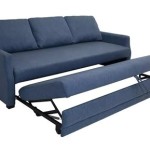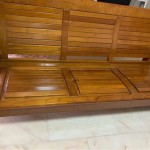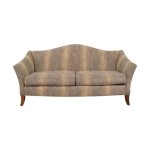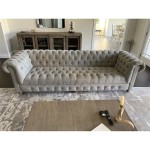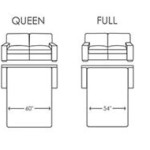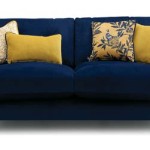Understanding the Wood Sofa Frame: A Foundation for Comfort and Durability
The wood sofa frame is the unsung hero of comfortable and enduring seating. It's the structural core that supports the cushions, fabric, and, of course, the occupants. The quality of the wood, the joinery techniques employed, and the overall design of the frame directly impact the lifespan, stability, and comfort of a sofa. Understanding the intricacies of wooden sofa frames allows informed decisions when purchasing or even undertaking DIY upholstery projects.
While aesthetics often take precedence in furniture selection, the underlying frame dictates the overall functionality and longevity of the piece. A visually appealing sofa with a poorly constructed frame will inevitably lead to discomfort, sagging, and eventual structural failure. Therefore, a critical assessment of the wood frame is essential for a sound investment.
This article will explore various aspects of wood sofa frames, examining the types of wood used, common construction methods, and factors influencing the overall quality and durability of these essential furniture components. It will also touch upon potential problems and maintenance considerations that contribute to a sofa's lasting appeal.
Wood Types and Their Properties
The choice of wood significantly impacts the strength, durability, and cost of the sofa frame. Hardwoods, known for their density and slow growth, are generally preferred for their superior structural integrity. Softwoods, on the other hand, are more readily available and easier to work with, but may require additional reinforcement.
Hardwoods:
Oak: Oak is a popular choice due to its exceptional strength, durability, and resistance to wear and tear. It's a relatively dense wood that holds screws and joints well, making it ideal for load-bearing components of the frame. Oak is available in various grades and finishes, offering aesthetic versatility.
Maple: Maple is another hardwood valued for its strength and smooth grain. It's slightly lighter in color than oak, making it a good option for lighter upholstery fabrics. Maple's consistent texture and ease of finishing contribute to its aesthetic appeal.
Birch: Birch is a closed-grain hardwood that is exceptionally strong and shock resistant. It is often used in high-quality furniture for its ability to withstand stress and impact. Birch is also a more affordable option compared to oak or maple, making it a cost-effective choice.
Ash: Ash is known for its flexibility and strength. It's commonly used in furniture that requires bending or shaping. Ash has a distinctive grain pattern that adds visual interest to the frame, even when covered with upholstery.
Mahogany: While less commonly used in modern sofa frames due to its cost, mahogany is a premium hardwood known for its rich color, durability, and resistance to decay. It was historically favored in high-end furniture construction.
Softwoods:
Pine: Pine is a readily available and affordable softwood. It's easy to work with but lacks the strength and density of hardwoods. Pine frames are often used in less expensive sofas or require reinforcement with metal brackets or hardwood supports.
Fir: Fir is another common softwood, similar to pine in its properties. It's lightweight and relatively strong for a softwood, making it suitable for frames that do not require exceptional load-bearing capacity. Fir is often used in conjunction with hardwoods for a cost-effective balance of strength and affordability.
Plywood: While technically not a solid wood, plywood is an engineered wood product made by layering thin sheets of wood veneer glued together. High-quality plywood can provide significant strength and stability, making it a viable option for certain sections of a sofa frame, particularly for larger, flat surfaces.
The choice of wood should be carefully considered based on budget, desired lifespan, and the overall design of the sofa. Selecting appropriate material is crucial for the structural integrity and durability of the final product.
Construction Methods and Joinery
The method of constructing the frame and the type of joinery used are just as important as the wood itself. Strong, well-executed joints are essential for preventing wobbling, creaking, and eventual frame failure. Several common joinery techniques are employed in wood sofa frame construction.
Mortise and Tenon: This is a traditional and highly durable joinery method where a projecting tenon is inserted into a mortise (a hole) in the adjoining piece of wood. Mortise and tenon joints offer exceptional strength and resistance to racking.
Dovetail Joints: Dovetail joints are interlocking joints that provide exceptional strength and resistance to pulling forces. They are commonly used in drawers and other areas where a strong, visually appealing joint is required.
Dowelled Joints: Dowelled joints use cylindrical wooden dowels inserted into pre-drilled holes to connect two pieces of wood. While not as strong as mortise and tenon or dovetail joints, dowelled joints are a cost-effective option for less stressed areas of the frame.
Screwed and Glued Joints: This method involves screwing two pieces of wood together after applying glue. While seemingly simple, screwed and glued joints can provide adequate strength when properly executed with high-quality glue and appropriately sized screws. This is one of the most common production methods used today.
Corner Blocks: Corner blocks are triangular pieces of wood glued and screwed into the corners of the frame to provide additional reinforcement. They help to distribute stress and prevent the frame from racking or twisting.
The careful selection and execution of these joint types ensure the frame can withstand the stresses of daily use. Corner reinforcement, gussets and other types of bracing add to sturdiness and longevity.
Factors Influencing Quality and Durability
Beyond wood type and joinery, several factors contribute to the overall quality and durability of a wood sofa frame. These include the frame's design, the craftsmanship involved in its construction, and the quality of any additional hardware used.
Frame Design: The overall design of the frame influences its structural integrity. A well-designed frame will distribute weight evenly and minimize stress points. Frames with ample support and bracing are more likely to withstand heavy use.
Craftsmanship: The skill and attention to detail of the craftsman constructing the frame are crucial. Properly aligned joints, tight connections, and a smooth finish all contribute to the frame's long-term performance. Automated manufacturing processes can offer consistency, but hand-crafted details often indicate a higher level of quality.
Hardware Quality: The quality of screws, nails, and other hardware used in the frame construction can significantly impact its durability. Using rust-resistant hardware is particularly important in humid environments.
Seasoning and Drying of Wood: The way wood is treated before construction impacts its stability and resistance to warping and cracking. Properly seasoned and dried wood minimizes the risk of distortion over time. Kiln-dried wood is the best option as it reduces moisture content in a controlled environment.
Weight Capacity: The intended use and weight capacity should be considered. A frame designed for light to medium use may not withstand the rigors of heavy daily use by multiple occupants. It's important to inquire about the sofa's weight capacity before purchase.
Finishing and Protection: The finish applied to the wood frame can provide protection against moisture, insects, and other environmental factors. A properly applied finish extends the lifespan of the frame.
Regular Inspection and Maintenance: Checking the frame periodically for loose joints or signs of damage is essential for maintaining its structural integrity. Tightening screws, re-gluing loose joints, and repairing any damage promptly can prevent more significant problems from developing.
Environmental Factors: Extreme temperatures or humidity fluctuations can negatively impact the wood frame. Maintaining a stable indoor environment can help to prolong its lifespan.
Consider all aspects carefully while scrutinizing the wood sofa frame to ensure it meets your requirements for comfort, durability, and longevity. By understanding the different components and construction methods, one can make a well-informed decision when purchasing furniture.
In addition to the factors mentioned above, the suspension system employed in the sofa also plays a crucial role in overall comfort and support. While the frame provides the structural foundation, the suspension system supports the cushions and distributes weight across the seating area. Common suspension systems include sinuous springs, coil springs, and webbing.
Sinuous springs, also known as "S" springs, are curved metal wires that run horizontally across the frame. They are typically attached to the frame with clips and provide a resilient and supportive seating surface. The quality of the springs and the spacing between them influence the level of support and comfort.
Coil springs are individual springs that are tied together and attached to the frame. They offer excellent support and are often found in high-end sofas. The gauge of the wire and the number of coils in each spring affect the firmness and durability.
Webbing consists of woven straps that are stretched across the frame. It provides a flexible and comfortable seating surface. The type of webbing and the tension applied to the straps influence the level of support. Elastic webbing offers a more resilient feel, while non-elastic webbing provides a firmer support.
The combination of a well-constructed wood sofa frame and a quality suspension system contributes to a comfortable and durable seating experience. When evaluating a sofa, it's important to consider both the frame and the suspension system to ensure long-lasting support and comfort.
Finally, the upholstery fabric and the overall design of the sofa should complement the strength and integrity of the wood frame. A durable fabric that can withstand wear and tear protects the frame from spills, dirt, and damage. The design of the sofa should also reinforce the frame's structure, distributing weight evenly and minimizing stress points.

Devale Wood Frame Sofa Cozymatic Us

James Furniture Frames Built Sofa Wood Frame Wooden Designs

Modern Sofa Mid Century Frame Couch Solid Hardwood Shown In Walnut

Comfortable Sofa With Wooden Frame Customizable Idfdesign

Wood Wooden Sofa Frame Shape L

Chelan 3 Seat Exposed Wood Frame Sofa From Dutchcrafters Amish

Which Wood Type Is Perfect For Sofa Frames Just Furniture

Handy Living Columbus Mid Century Modern Sofa With Exposed Wood Frame In Khaki Linen Clm Sx Lin82c The Home Depot

Which Wood Type Is Perfect For Sofa Frames Just Furniture

Wood Sofa Frame Shape Horizontal


